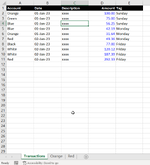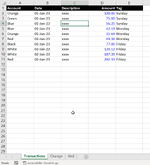Hi
I am trying to find the most efficient way to write some VBA code that will achieve the following:
1) I have a large table of data on one sheet (four columns, but perhaps 2,000 rows).
2) Each row of data has a label in the first column that categorises the data in the rest of the row.
3) I have a separate sheet for each category.
4) I'd like to extract the data from the main table into the respective sheets (by label).
5) I'd end up with the category specific sheets with a table of data in each one.
Any ideas how best to do this? Not sure if looping through each row from top to bottom to identify category then copy/paste into relevant sheet is best. Or if there is a more efficient method (maybe using a pivot table; or using the data filter etc).
Thanks!
I am trying to find the most efficient way to write some VBA code that will achieve the following:
1) I have a large table of data on one sheet (four columns, but perhaps 2,000 rows).
2) Each row of data has a label in the first column that categorises the data in the rest of the row.
3) I have a separate sheet for each category.
4) I'd like to extract the data from the main table into the respective sheets (by label).
5) I'd end up with the category specific sheets with a table of data in each one.
Any ideas how best to do this? Not sure if looping through each row from top to bottom to identify category then copy/paste into relevant sheet is best. Or if there is a more efficient method (maybe using a pivot table; or using the data filter etc).
Thanks!







